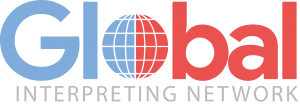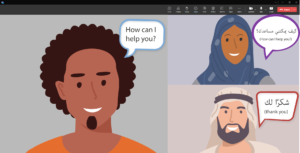
Patient education materials play a pivotal role in empowering individuals to make informed decisions about their health and treatment options. These materials include brochures, pamphlets, instructional videos, and digital resources designed to provide crucial information about medical conditions, treatments, preventive measures, and healthy lifestyle choices. However, for Limited English Proficient (LEP) populations, accessing and comprehending these materials can be a significant challenge.
LEP individuals often face barriers in understanding medical information due to language differences, which can lead to poor health outcomes, increased hospitalizations, and a higher likelihood of miscommunication between patients and healthcare providers. This disparity underscores the necessity of ensuring that patient education materials are accessible to everyone, regardless of their language proficiency.
Understanding LEP Populations
At around 9% of the US, LEP populations are incredibly diverse, encompassing individuals from various linguistic and cultural backgrounds. The most common languages spoken by LEP individuals in the U.S. include Spanish, Chinese (Mandarin and Cantonese), Vietnamese, Tagalog, Arabic, and Korean. Each of these language groups brings distinct cultural norms, values, and healthcare practices that must be considered when developing patient education materials.
Challenges Faced by LEP Individuals LEP individuals face numerous challenges in accessing and understanding healthcare information. These challenges can include:
- Language Barriers: Difficulty understanding medical terminology and instructions in English.
- Cultural Differences: Variations in health beliefs and practices that may affect how medical information is perceived and acted upon.
- Health Literacy: Lower health literacy levels, which can further complicate the understanding of medical information even when translated into the individual’s native language.
- Access to Resources: Limited access to culturally and linguistically appropriate healthcare resources, exacerbating disparities in healthcare outcomes.
Statistics Highlighting the Need The significance of addressing these challenges is underscored by various statistics. For instance, studies have shown that LEP individuals are more likely to experience adverse health outcomes, including higher rates of hospital readmissions, increased incidence of medical errors, and lower levels of patient satisfaction. Furthermore, LEP patients often report feeling less satisfied with their healthcare experience and less confident in their understanding of their medical conditions and treatment plans compared to their English-speaking counterparts.
Legal and Ethical Considerations
Healthcare providers have both legal and ethical obligations to ensure that patient education materials are accessible to Limited English Proficient (LEP) populations. These obligations are rooted in a framework of federal and state laws, as well as ethical guidelines aimed at promoting health equity and patient safety.
Legal Requirements
Several federal laws mandate the provision of language assistance services to LEP individuals:
- Title VI of the Civil Rights Act of 1964: This landmark legislation prohibits discrimination on the basis of race, color, or national origin in programs and activities receiving federal financial assistance. Under Title VI, healthcare providers receiving federal funds are required to take reasonable steps to ensure meaningful access to their services for LEP individuals. This includes providing free language assistance services such as interpreters and translated materials.
- Affordable Care Act (ACA): Section 1557 of the ACA extends the non-discrimination protections of Title VI to all health programs and activities that receive federal funding. It explicitly includes language access requirements, reinforcing the obligation of healthcare providers to offer language assistance to LEP patients.
- Americans with Disabilities Act (ADA): While primarily focused on individuals with disabilities, the ADA also requires healthcare providers to ensure effective communication with patients, which can include providing language services to LEP individuals who have communication disabilities.
Ethical Obligations
Beyond legal requirements, healthcare providers have an ethical duty to ensure that all patients, regardless of language proficiency, have access to understandable health information. This ethical obligation is grounded in several principles:
- Respect for Autonomy: Patients have the right to make informed decisions about their healthcare. Ensuring that LEP patients understand their medical conditions, treatment options, and potential outcomes is essential for respecting their autonomy.
- Beneficence and Non-Maleficence: Healthcare providers are obligated to act in the best interest of their patients and to do no harm. Providing accurate and comprehensible health information to LEP patients helps prevent misunderstandings that could lead to adverse health outcomes.
- Justice: The principle of justice requires that healthcare resources and services be distributed fairly and equitably. This includes ensuring that LEP patients have the same access to health information and education materials as English-speaking patients.
Informed Consent
A critical aspect of legal and ethical obligations is the concept of informed consent. For informed consent to be valid, patients must understand the information provided to them about their treatment options, risks, and benefits. For LEP patients, this means that consent forms, educational materials, and verbal explanations must be provided in a language they can understand.
Implementing Legal and Ethical Standards
Healthcare providers can take several steps to meet their legal and ethical obligations:
- Professional Translation Services: Utilize certified medical translators to ensure that written materials are accurately translated and culturally appropriate.
- Qualified Interpreters: Provide access to trained medical interpreters for verbal communication, whether in-person or via telehealth platforms.
- Staff Training: Educate healthcare staff about the importance of language access services and how to effectively work with interpreters and translated materials.
- Patient Feedback: Regularly solicit feedback from LEP patients to assess the effectiveness of language services and identify areas for improvement.
By adhering to these legal and ethical standards, healthcare providers can ensure that LEP patients receive the information they need to make informed healthcare decisions, thereby enhancing patient safety, satisfaction, and overall health outcomes.
The Importance of Culturally and Linguistically Appropriate Materials
Creating patient education materials that are both culturally and linguistically appropriate is crucial for ensuring that Limited English Proficient (LEP) populations can access, understand, and use the information provided to manage their health effectively. Culturally and linguistically tailored materials help bridge communication gaps, enhance patient comprehension, and improve health outcomes.
Impact on Patient Comprehension and Health Outcomes
Studies have shown that providing patient education materials in a patient’s preferred language significantly improves their understanding of medical conditions, treatment options, and preventive measures. For example, a study published in the Journal of General Internal Medicine found that LEP patients who received language-concordant care were more likely to understand their diagnosis and treatment plan, leading to better adherence and health outcomes.
Furthermore, culturally appropriate materials consider the patient’s cultural beliefs, practices, and values, which can influence how they perceive and respond to medical information. For instance, certain cultural groups may have specific dietary restrictions, health practices, or beliefs about medical interventions that should be acknowledged and respected in educational materials. By addressing these cultural nuances, healthcare providers can build trust and rapport with LEP patients, making them more likely to engage with and follow medical advice.
Examples of Effective Culturally Appropriate Materials
Effective culturally and linguistically appropriate materials often include:
- Translated Documents: Accurate translations of patient education materials, including brochures, pamphlets, and consent forms, into the patient’s preferred language.
- Visual Aids: Use of culturally relevant images, diagrams, and infographics to illustrate medical concepts and instructions. Visual aids can help bridge language gaps and enhance understanding, especially for patients with low literacy levels.
- Multimedia Resources: Videos, audio recordings, and interactive digital content that provide information in an engaging and accessible format. These resources can be particularly useful for explaining complex medical procedures or demonstrating self-care techniques.
The Role of Cultural Competence in Material Development
Developing culturally appropriate patient education materials requires a deep understanding of the target population’s cultural context. This involves:
- Community Involvement: Engaging with community leaders, cultural organizations, and patient advocacy groups to gather insights and feedback on the cultural relevance of educational materials.
- Cultural Competence Training: Providing training for healthcare providers and material developers on cultural competence and the importance of cultural sensitivity in healthcare communication.
- Continuous Evaluation: Regularly assessing the effectiveness of educational materials through patient feedback and health outcome data. This helps identify areas for improvement and ensures that materials remain relevant and effective.
Best Practices for Creating Accessible Patient Education Materials
Ensuring that patient education materials are accessible to Limited English Proficient (LEP) populations involves a combination of clear language, cultural sensitivity, and effective use of technology. Here are some best practices for creating and disseminating these materials:
Use of Plain Language and Health Literacy Principles
- Simplify Language: Use plain language that is easy to understand. Avoid medical jargon and technical terms. When technical terms are necessary, provide clear definitions or explanations.
- Short Sentences and Paragraphs: Break information into short, digestible sentences and paragraphs. This makes it easier for readers to follow and comprehend the material.
- Active Voice: Write in the active voice to make instructions clear and direct. For example, “Take the medication with food” is clearer than “The medication should be taken with food.”
Importance of Professional Translation and Interpretation Services
- Certified Translators: Utilize professional translators who are certified and experienced in medical translation. This ensures accuracy and cultural appropriateness in the translated materials.
- Quality Assurance: Implement a quality assurance process that includes proofreading and reviewing translations by native speakers who understand the cultural context.
- Interpreter Services: Provide access to qualified medical interpreters for verbal instructions and consultations. This is especially important for complex medical discussions and consent processes.
Incorporating Visual Aids and Multimedia
- Visual Aids: Use culturally relevant images, diagrams, and infographics to support the text. Visual aids can help clarify instructions and make the information more engaging.
- Videos and Audio Recordings: Develop videos and audio recordings that explain medical information in the patient’s preferred language. These resources can be particularly useful for demonstrating procedures and self-care techniques.
- Interactive Digital Content: Create interactive content, such as online tutorials or mobile apps, that patients can access at their convenience. These tools can provide step-by-step guidance and reinforce learning through repetition.
Methods for Testing and Validating Materials
- Pilot Testing: Test the materials with a small group of LEP patients to gather feedback on clarity, cultural relevance, and overall effectiveness. Use this feedback to make necessary adjustments.
- Focus Groups: Conduct focus groups with members of the target LEP community to discuss the materials and identify potential improvements. This collaborative approach ensures that the materials meet the needs and preferences of the audience.
- Readability Tools: Utilize readability assessment tools to ensure that the language used is appropriate for the intended audience. Aim for a readability level that matches the average literacy level of the target population.
Collaboration with Community Organizations
- Community Partnerships: Partner with community organizations, cultural groups, and patient advocacy organizations to develop and distribute patient education materials. These partnerships can provide valuable insights into the needs of LEP populations and help reach a wider audience.
- Community Health Workers: Employ community health workers who speak the same language as the LEP patients. These workers can act as liaisons between healthcare providers and the community, ensuring that education materials are effectively communicated and understood.
Utilizing Technology for Enhanced Accessibility
Technology plays a pivotal role in making patient education materials accessible to Limited English Proficient (LEP) populations. By leveraging digital tools and platforms, healthcare providers can reach a wider audience and enhance the effectiveness of their communication strategies. Here are some key approaches to utilizing technology for this purpose:
Digital Tools and Platforms
- Mobile Health Apps: Mobile apps designed for patient education can provide information in multiple languages, making it easier for LEP patients to access healthcare resources. Apps can offer features such as medication reminders, appointment scheduling, and educational videos. For instance, the “MyChart” app includes multilingual support, allowing patients to view their health records and receive notifications in their preferred language.
- Telehealth Platforms: Telehealth services have become increasingly important, especially during the COVID-19 pandemic. Integrating language services into telehealth platforms ensures that LEP patients can receive real-time interpretation during virtual consultations. Platforms like Zoom and Doxy.me offer features that support simultaneous interpretation, improving communication between patients and healthcare providers.
- E-Learning Modules: Online educational modules and tutorials can be developed to provide detailed health information in various languages. These modules can include interactive elements, such as quizzes and animations, to enhance understanding and engagement. For example, the Health Literacy Online guide by the Office of Disease Prevention and Health Promotion offers strategies for creating user-friendly e-learning resources.
Benefits of Technology for LEP Populations
- Accessibility: Digital tools can be accessed from anywhere, at any time, providing LEP patients with the flexibility to learn at their own pace. This is particularly beneficial for patients with busy schedules or those living in remote areas.
- Engagement: Multimedia elements, such as videos and interactive graphics, can make learning more engaging and effective. Visual aids can help explain complex medical concepts, making them easier to understand for patients with limited literacy skills.
- Consistency: Digital platforms ensure that information is consistently presented, reducing the risk of miscommunication. Automated translations and standardized content can help maintain accuracy across different languages.
- Feedback and Improvement: Technology allows for the collection of user feedback, which can be used to improve the quality and relevance of patient education materials. Analytics tools can track how patients interact with digital resources, providing insights into their effectiveness and areas for enhancement.
Examples of Successful Implementation
- Kaiser Permanente’s Multilingual Portal: Kaiser Permanente has developed a multilingual patient portal that provides access to health information, appointment scheduling, and medical records in multiple languages. This portal has significantly improved patient satisfaction and engagement among LEP populations.
- Mayo Clinic’s Patient Education Videos: Mayo Clinic offers a series of patient education videos available in several languages. These videos cover a wide range of topics, from disease prevention to treatment options, and are designed to be culturally relevant and easy to understand.
Success Stories
Examining examples of how healthcare organizations have successfully created and implemented accessible patient education materials for Limited English Proficient (LEP) populations can provide valuable insights and practical lessons. These examples highlight effective strategies, best practices, and the positive outcomes achieved by overcoming communication barriers.
A Nation System’s Multilingual Health Information Portal
Background: A national health system recognized the need to provide comprehensive healthcare information to its diverse patient population, which includes a significant number of LEP individuals.
Approach: The organization developed a multilingual health information portal that offers educational materials, appointment scheduling, and access to medical records in multiple languages. They employed certified medical translators and cultural consultants to ensure the accuracy and cultural relevance of the materials.
Outcomes:
- Increased Access: LEP patients reported improved access to vital health information and services.
- Enhanced Patient Satisfaction: Patient surveys indicated higher satisfaction levels due to the availability of materials in their preferred languages.
- Better Health Outcomes: There was a notable improvement in patient adherence to treatment plans and follow-up appointments, leading to better overall health outcomes.
Nationally-recognized Hospital’s Culturally Tailored Patient Education Videos
Background: This hospital aimed to enhance patient understanding and engagement by developing educational videos that cater to the linguistic and cultural needs of their LEP patients.
Approach: The hospital created a series of patient education videos available in several languages. These videos covered a wide range of health topics, from disease prevention to treatment options, and were designed to be culturally sensitive and easy to understand.
Outcomes:
- Improved Patient Understanding: LEP patients found the videos helpful in understanding complex medical information.
- Higher Engagement Levels: The interactive nature of the videos kept patients engaged and informed about their health.
- Positive Feedback: Patient feedback highlighted the effectiveness of the videos in clarifying medical instructions and reducing anxiety about treatments.
Major Northeast Children’s Hospital’s Telehealth and Interpretation Services Integration
Background: A major Children’s Hospital in the Northeast sought to address the communication challenges faced by LEP families during telehealth consultations.
Approach: The hospital integrated language interpretation services into their telehealth platform, ensuring that LEP patients could access virtual consultations with the help of qualified interpreters. They also provided training for healthcare providers on how to effectively use these services.
Outcomes:
- Enhanced Communication: LEP families experienced better communication with healthcare providers, leading to clearer understanding of medical conditions and treatment plans.
- Increased Access to Care: The integration of interpretation services into telehealth made it easier for LEP patients to access specialized care without language barriers.
- Higher Satisfaction Rates: Both patients and providers reported high levels of satisfaction with the telehealth consultations supported by interpreters.
Ensuring that patient education materials are accessible to Limited English Proficient (LEP) populations is vital for promoting health equity and improving patient outcomes. Understanding the diversity and unique challenges of LEP populations, healthcare providers must navigate legal and ethical obligations to offer culturally and linguistically appropriate resources.
If you’d like your materials reviewed, edited, or translated, contact us.


